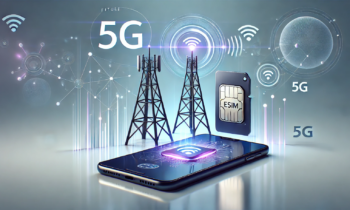Preface
A data center is a facility in which computers and telecommunications equipment are housed. The three schools are by volume (height) the most important indoor spaces in the world. Data centers have become a more prominent part of our lives and the economy as Internet usage transitioned from a rarity to a norm.
The phrase “data center” is most often used to describe large facilities that house computer systems and associated components, such as telecommunications and storage systems. A data center’s design is based on a network of computing and storage resources that enable the delivery of shared applications and data. The key components of a modern data center design include routers, switches, firewalls, storage systems, servers, application-delivery controllers, and load balancers.
Learn more about Data Centers
Data center operators use the data cooling systems extensively. Data cooling systems are essential for ensuring that data center operators do not exceed the acceptable heat range when creating temperature. Data center operators are quickly adopting data center cooling because it is eco-friendly and energy-efficient. The increase in 4G LTE network use is driving the growth of data center numbers. Due to the high computational demands of Media and AI applications, there has been an increase in data center numbers. Edge computing adoption and an increase in IoT devices will fuel this growth.
There are basically two types of cooling systems: water-based and air-based. Air-based cooling is where air circulates in data centers to maintain temperature. Water-based cooling, on the other hand, is divided into immersion cooling and water cooled racks. Here liquid coolants flow over hot components to maintain temperature.
How to implement cooling in a data center
When it comes to data center cooling, there are a few different ways to go about it. One common method is called “cold aisle containment” which involves using physical barriers to keep the cold air in and the hot air out. Another option is to use “air-side economizers” which take advantage of outside air temperature to help cool things down. And lastly, you can also use “evaporative cooling” which uses water evaporation to help lower the temperature.
No matter which route you decide to go, there are a few key things to keep in mind. First, you want to make sure that your data center has good airflow. This means having proper ventilation and making sure that there aren’t any blockages preventing air from moving around freely.
Dynamics Factors:
Growth Factors
Future growth is expected to be possible due to the growing demand for data centers that are energy efficient and future planned investments. Organizations can also invest in data centers because of the emergence of big data and cloud technology. This allows them to ensure business continuity. This is another important factor that will increase the market size in the coming years. Accordingly, cooling solutions demand is directly proportional with the increase in data center facilities worldwide.
Drivers:
Industry growth is driven by several factors: increasing awareness about green data, improving efficiency in data centers and building data centers in Asia-Pacific.
There is a growing demand for cost-effective solutions for data centers: Large data centers can reduce capital and operational cooling costs by using chillerless data centers, which are not dependent on outside air to cool their needs. This is why data center owners are keen to address this issue. They want to find cost-effective and efficient cooling solutions.
Restrains:
The growth is impeded by high power consumption and high setup costs. Contracting in the data center cooling market will be due to high maintenance and construction costs. The market trend could be negatively affected by the lack of a backup plan in case of an outage.
Suggested Reading: US and Europe Data Center Cooling
Recent Development:
CoolIT Systems, Inc., a leader in liquid cooling solutions for data centers and desktops, opened a new office located in Xinzhuang, New Taipei, 27 September 2021. It will be the international headquarters of the company’s ongoing global expansion. This new center would have the equipment and resources necessary to test products with market leaders as well as create innovative solutions for clients.
June 2020 – Asetek announced a partnership with Hewlett Packard Enterprise in order to deliver its premium data centre liquid cooling solutions to HPE Apollo Systems. The high-performance and density-optimized solutions are designed to address high-performance computing and Artificial Intelligence needs. This integration allows for the deployment of high-wattage processors and high-density configurations that can support compute-intensive workloads.



